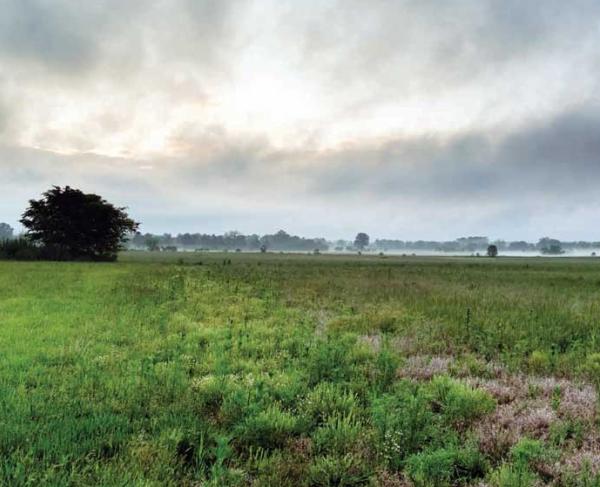The Fords of the Rappahannock

Clark B. Hall
Fact: More pitched battles have been fought on the Rappahannock’s banks than any other river in this country.
It is indeed a truism that this modest waterway achieved a strategic and tactical prominence in the Civil War exceeding any river, including the Potomac or the Mississippi. During the war, home front civilians learned from newspapers that the natural barrier presented by the Rappahannock immortally marked the river as the bloody vortex of eastern military operations. Maps illustrating the “theatre of war” were pored over at kitchen tables while citizens tracked battle actions in central Virginia. Noting the distinction for an unpretentious river few had previously heard of, big city orchestras blared out a popular, darkish ditty that military musicians composed as, “Hell on the Rappahannock.”
Emanating from a forceful spring among the rocks and ferns near Chester Gap in the Blue Ridge, the upper Rappahannock meanders eighty miles to Fredericksburg. During half of that southeastern course to the fall line, the river marks the eastern boundary of Culpeper County. Fauquier is to the east, and three miles of the river separates Culpeper from Stafford County, just above the confluence with the Rapidan, Culpeper’s eastern terminus.
Beginning in March 1862 when Gen. Joe Johnston’s Confederate army drew the first “line in the bank” on the Rappahannock, this little river—always defended from the Culpeper side—was intermittently marched and fought over until the Federals finally secured Culpeper in November 1863. Union and Confederate commanders referred to this sinuous river demarcation as the “Rappahannock Line.” Rebel soldiers boastfully referred to the river as the “Dare Mark Line,” meaning, “We dare you Yankees to attack.” And assault, they did—both sides died by the thousands within ten miles of the Rappahannock River.
So we know they crossed the river to fight. Where did they cross?

An old Middle English word describes a “ford” as “a shallow place in a river where a crossing can be made…” And by far, the most famous military fords, on the most famous river in America in the 1860’s, were located in none other Culpeper County, Virginia.
Coming upriver from the Rapidan confluence, the first Culpeper ford is Richard’s Ford and almost forty miles north, just above Waterloo, is Dulin’s Ford. Sandwiched between these two flank crossings are crowded more than twenty Colonial era and Civil War fords, almost all of them abandoned and forgotten. But yet even today their colorful monikers trigger the imagination: Skinker’s; Field’s; Cow’s; Hedgeman’s Hole; Fish Dam; and Fauquier Springs Ford.
The most legendary military fords—those most marched and fought over—were located, not surprisingly, in Culpeper’s strategic middle section straddling both the Carolina Road and the Orange and Alexandria Railroad. The most celebrated ford in the entire Civil War is Kelly’s Ford, where hundreds of thousands of soldiers crossed and fought in several battles and campaigns, including the Battle of Kelly’s Ford, Stoneman’s Raid, Chancellorsville, Brandy Station and the Battle of Rappahannock Station.
Upriver from Kelly’s, Norman’s Ford identifies the crossing of the Carolina Road, and three miles north, Beverly’s Ford rivals Kelly’s as the most heavily utilized river crossing. The Gettysburg Campaign began at Beverly’s Ford on June 9, 1863 as Federals initiated the Battle of Brandy Station. Just north of Beverly’s, Freeman’s Ford keys the site of a spirited 1862 battle wherein a Union general lost his life. (And the topic of a future column.)
The argument can be made that once the Union army finally penetrated the “Rappahannock Line,” the outcome of the war was in sight for President Abraham Lincoln. And if that conclusion is valid—I believe it is—then the successful military passage of the “Rappahannock’s famous fords” facilitated that result.
Related Battles
78
133


